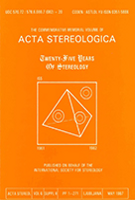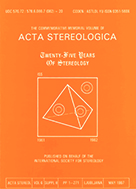- Portada
- Volume 2 (1983)
- Number 1 - Apr. 1983
- Changes in jejunal arteries in spontaneously hypertensive and normotensive rats following neonatal treatment with capsaicin
Vista(s): 338 (1 ULiège)
Descargar(s): 118 (1 ULiège)
Changes in jejunal arteries in spontaneously hypertensive and normotensive rats following neonatal treatment with capsaicin

Abstract
The relationship between blood pressure and jejunal artery morphology was examined in spontaneously hypertensive rats (SHR) rendered normotensive with capsaicin treatment. At two days after birth SHR and normotensive rats were treated with a subcutaneous injection of capsaicin, a substance P-releasing undecapeptide.
At 4 and 12 weeks after treatment the animals were anesthetised and their blood pressures recorded through a femoral cannula. The animals were then sacrificed, and jejunal vessels removed and processed for electron microscopy. It was found that although the blood pressure of the SHR had been controlled by the capsaicin treatment at normotensive levels, wall thickening was present, similar to that seen in uncontrolled hypertensive rats. It was concluded that the morphology of the jejunal artery appears to be related to strain-linked factors other than blood pressure.






